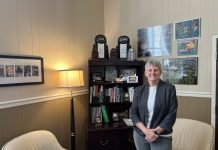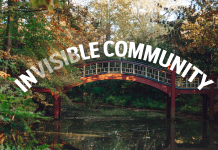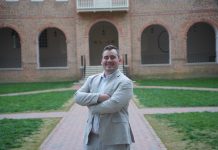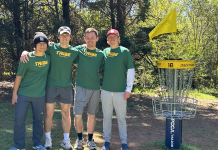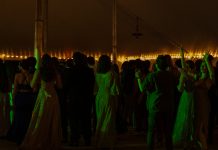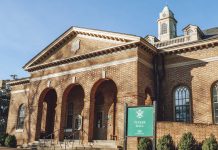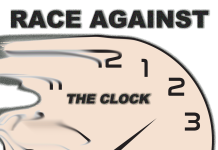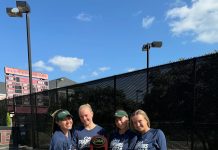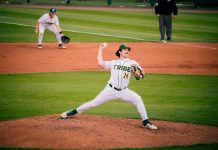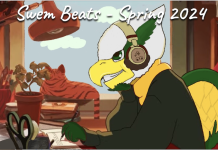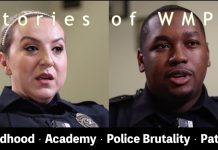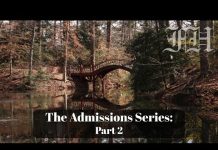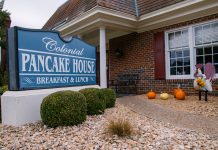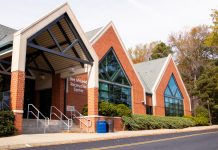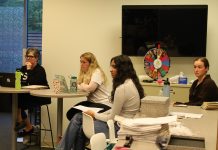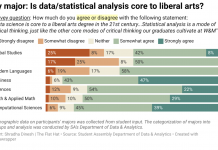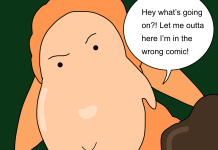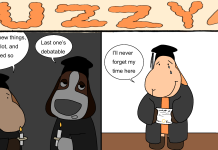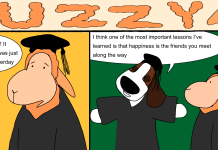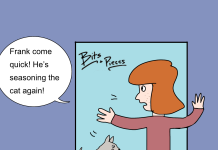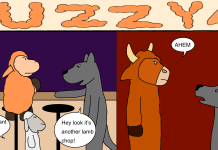In the early 18th century, income from the Nottoway Quarter, a plantation run by slaves, was used to support the College. While working on an honors thesis in history, alumna Kristin Zech, ’01, found that slaves contributed greatly to the College.
p. “There were slaves connected [to the College] up to the Civil War,” history lecturer Juile Richter said.
p. Richter, who worked with Colonial Williamsburg in 1999 to put together information about the history of slavery in CW, said slaves would have been at the College throughout the colonial period.
p. According to Zech’s research, the Nottoway Quarter supported the College. Profits made from the slave-run tobacco plantation were used to assist students who needed financial aid and to offset other College costs. According to documents Zech found, nearly half of the 1718 endowment dealing with Nottoway Quarter was used to purchase slaves.
p. “Anything that they grew would have been sold for the benefit of the College,” Richter said.
p. Richter added that this was not the only capacity in which slaves were involved at the College.
p. “Some of the students brought personal slaves with them,” she said. “Most of the gentry boys – it was very likely they would have a personal slave to take care of what they needed.”
p. The College also employed slaves on campus to perform labor tasks. Examples included serving food, washing dishes, cleaning chamber pots and doing laundry.
p. “Any of the unglamorous work was likely to have been done by slaves,” Richter said.
p. She added that it was likely slaves were involved in the construction of Colonial Williamsburg and the College.
p. “I haven’t seen a document [about] whether slaves built buildings, but I would feel most comfortable that they probably did,” she said. “I wouldn’t be surprised.”
p. She added that there is evidence that many of the laborers in Colonial Williamsburg owned slaves. Some may have installed windows in the Brafferton.
p. The Flat Hat reported in February that the Wren Building was most likely built by slaves, according to a Colonial Williamsburg historian. Archaeological research done by the Colonial Williamsburg Foundation shows that James Wray was one of the glaziers at the Brafferton School who employed many slaves.
p. Zech’s research also found that the College would hire its slaves out to the Williamsburg area. Research done by the Colonial Williamsburg Foundation and Zech shows that there were also fairly sizable numbers of freed slaves in Williamsburg. Richter added that Virginia Governor Nicholson started a school for enslaved men in 1774 and, for a while, the College had a grammar school for slaves.
p. “We do know that on the eve of the American Revolution a census of Williamsburg revealed that over half the town was black,” Richter said.
p. She did not want to speculate on whether there are descendents of the slaves or free blacks living in the city.
p. “I suspect it would be very tricky to trace that far back,” she said.
p. According to Zech and archives at Swem Library, at one point College President James Madison tried to sell slaves for land during his tenure. Archives indicate that there was still a presence of slaves until the Civil War.
p. The existence of slaves at college campuses in Virginia is not uncommon. According to an Associated Press report, April 26 the University of Virginia apologized for the use of slave labor on their grounds.
p. Richter said it was important to remember how much slaves have contributed to the history of the College.
p. “I don’t think you can separate the history of Williamsburg from the history of slavery,” she said.


